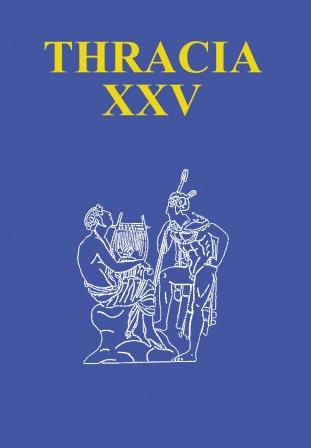Морската Майка на Боговете от Дионисопол (Балчик) и Морска майка от Созопол
The Sea Mother of the Gods from the Antique Temple in Dionysopolis (Balchik) and the Sea Mother from the Traditional Culture in Sozopol
Author(s): Kalin PorozhanovSubject(s): History, Archaeology, Cultural history, Comparative history, Ethnohistory, Local History / Microhistory, Social history, Ancient World
Published by: Институт за балканистика с Център по тракология - Българска академия на науките
Keywords: Pontic Mother; antiquity; faith; traditional culture; continuity; modernity
Summary/Abstract: In the dedications of the temple of the Pontic Mother of the Gods (4th century BC – 4th century) in Dionysopolis (now the town of Balchik) on Bulgarian Northern Black Sea Coast the goddesses‘ references are Pontic Mother of the Gods, Pontic Mother, Pontic Goddess Mother, Mother of the Gods. In other inscriptions from the Black Sea region is used Mother of the Gods (Bizone, Istros/Histria, Tomis, Olbia), Pantikapaion – Phrygian Mother, Mesambria – Kybele Mother, Marcianopolis – Heavenly Mother of the Gods. The concept of Pontic is found in inscriptions for Aphrodite from Histria and Olbia, from Tiristasis, Kyzikos/Cyzicus and the island of Kos, where it is a protector of sailors. Obviously, in the case of the Pontic goddess of the Temple of Dionysopolis, it is a protector from and into the sea. It is certain that behind the term Pontic lies the meaning of the sea, and this characteristic as the Sea Mother of the Gods, according to the use of forms of the Ionic dialect, probably originates in Asia Minor. In the traditional culture of the town of Sozopol (ancient poleis Apollonia Pontica) and in the others towns of Bulgarian Southern Black Sea coast, the Sea Mother (Greek Kiratalassa = mistress, lady soveraign, ruler of the sea) is the Goddess of the Sea. Its strength and power is so great that it can both break the sea and the worst storm to make it subsided. To express their esteem to her, fishermen portray her as a bust of a female figure made of wood. It is placed at the front of the boat’s nose to protect them in the sea. The comparability of the deities of the Sea Mother of the Gods from Antiquity in Dionysopolis (now town of Balchik) on Bulgarian Northern Black Sea Coast and the Sea Mother of the Twentieth Century in the town of Sozopol on Bulgarian Southern Black Sea Coast – allows for the problem situation to come up with a working hypothesis that would say it is for the Great Goddess Mother as a Thracian-Anatolian Deity, honored in Thracian environment in Hellenic poleis on the Thracian coasts.
Journal: Thracia
- Issue Year: 2020
- Issue No: 25
- Page Range: 40-51
- Page Count: 12
- Language: English, Bulgarian
- Content File-PDF

